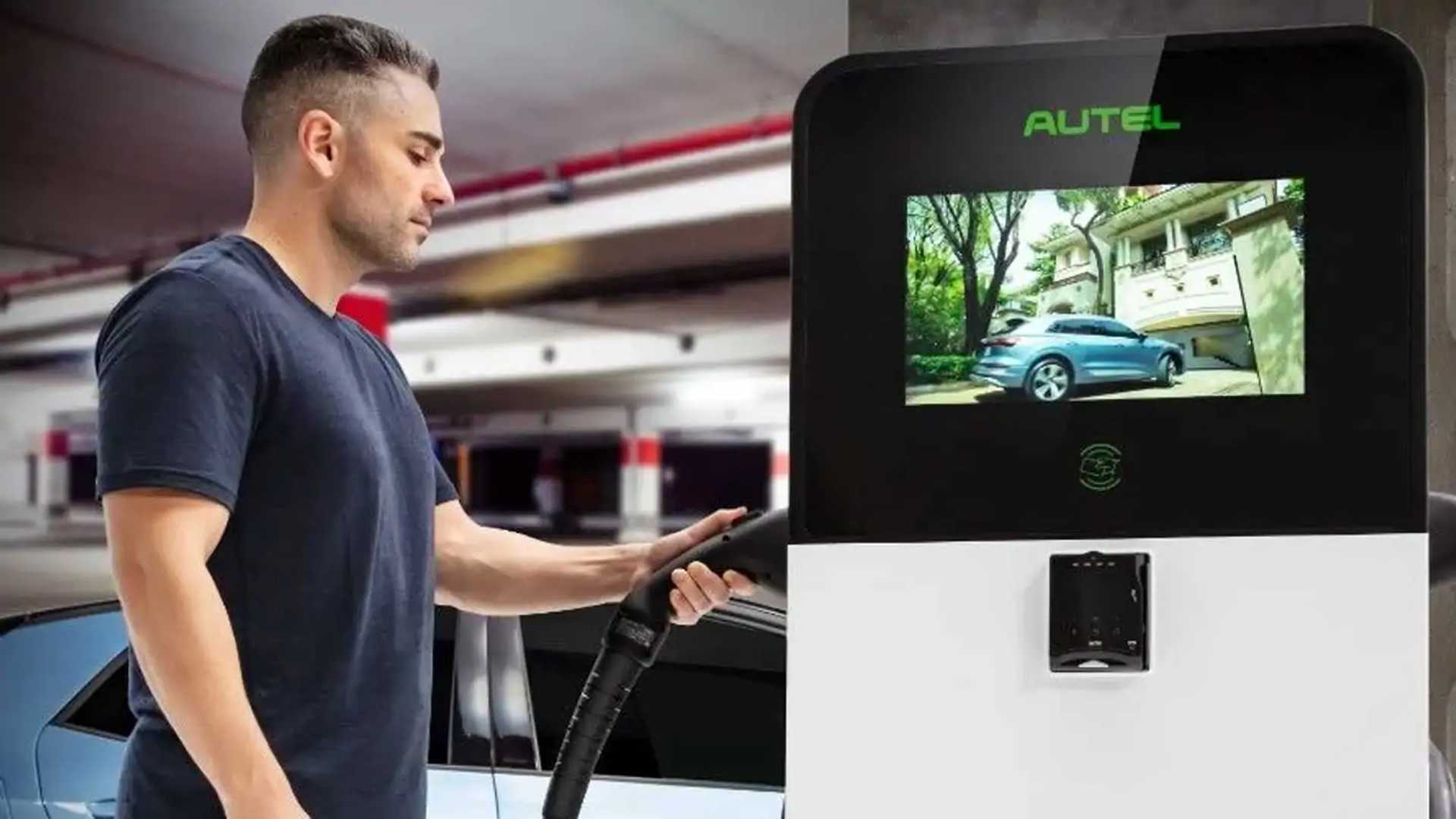
If you’re considering an EV or plug-in hybrid, you must also consider how you’ll keep your new vehicle’s batteries charged. You’ll need a home charger that fits the capabilities of your new EV and your driving routine.
Note: If any of the topics and terms mentioned below leave you wanting more info, check out the Autel Energy EV 101 Glossary, titled Learning To Speak EV.
Hybrid Electric Vehicles (HEVs)
If you purchase a traditional hybrid (like a Toyota Prius) you don’t need a charger. Even though these vehicles benefit from battery power and electric motor boosting to improve fuel economy, HEVs cannot be plugged in. No home charger is needed.
Plug-In Electric Vehicles (PHEVs)
PHEVs are the next step up in electric vehicles that have larger, higher-voltage battery packs than hybrids. As the name implies, PHEVs can be plugged in. And because PHEVs have gasoline engines to supplement battery power, these vehicles actually have two fuel doors; one for electricity and the other for gasoline.

Most new PHEVs come with a Level 1 charging cord as standard equipment. These are typically used for home-based charging and operate on standard 110-volt/12-amp service. During the development of this story, we had a 2022 Kia Niro PHEV in our fleet. The Niro PHEV travels around 26 miles on electricity before its engine turns on to power the little SUV.

The Niro’s Level 1 charging cable (think really big phone charging cord) adds about 4 miles of range per hour and works well for charging PHEV batteries overnight (6 hours). Like most Level 1 chargers from manufacturers, Kia’s included clear graphics that confirm the charging connection and service amperage (the higher the number, the quicker the charge).
Faster home charging is available with a Level 2, 240-volt home service. Level 2 charging adds up to 10 miles of charge per hour, getting the Kia Niro to its “full” EV range of 26 miles in under 3 hours.
Keep in mind that charging times – like estimated fuel mileage for traditional gasoline-powered vehicles – vary by manufacturer and model.
For many PHEV owners, the standard Level 1 charger is all they’ll need.
Battery Electric Vehicles (BEVs)
BEVs use batteries for power. Just batteries. There is not an onboard gasoline-powered generator to add juice back into the battery pack like with a PHEV. You can only drive just so far before you must recharge. It’s just like with a traditional car before the fuel tank goes dry.
To get the 250+ mile range that new BEVs offer, these vehicles have big battery packs. These big packs hold a lot of energy. For convenience and practicality’s sake, quick recharging is key. Where and how your charge is critical to a good ownership experience.
While BEVs usually come standard with a Level 1 charger, Level 2 home chargers are necessary for most people to practically use their BEV. Let’s see why that’s the typical case.

Using the standard Level 1 home charger on a 2023 Chevrolet Bolt EV, for example, adds just four miles of range per hour. The Bolt is capable of over 250 miles on a full battery, meaning that it would take more than 60 hours (nearly three days) of charging to achieve a complete charge from empty.
This truth makes a Level 2 home charging a necessity for BEVs. Level 2 home units can add 25 miles per hour, with a full charge completed in about 10 hours. Very practical for overnight charging.

When you’re driving away from home, higher-powered Level 2 public chargers can add approximately 37 miles of range per hour, while DC Fast Charge units can add up to 95 miles in just 30 minutes.
Again, charging times vary by manufacturer and model.
Smart Chargers vs. Dumb Chargers
When shopping for home-based Level 2 chargers, you’ll find a range of “smart” and “dumb” offerings.
Smart chargers are internet-enabled through WiFi/ethernet, a phone network or Bluetooth. Smart chargers and their mobile apps give users access to charging status, charging history, battery health monitoring, and charge scheduling. This last feature helps users set charging schedules to minimize energy costs by charging when utility rates are lower. Another available Smart feature enables the charger to prioritize incoming energy sources, for instance, to use free energy from home solar panels instead of costly electricity from the grid.
A “dumb” Level 2 charger is not internet-enabled but fulfills the task of providing a convenient, high-powered connection to charge your BEV. Many of these basic chargers have displays built-in to their housings that display connection status and charging levels. Additionally, some capabilities of Smart chargers are offered through the apps provided by the EV manufacturer, so a less expensive “Dumb” charger may not be so dumb after all.

Making a Home Charger Decision
After you’ve decided between Smart and “dumb” units, it’s time to pick a particular unit. Here are a few considerations.
Most household 220-Volt systems are rated at 40 amps. To provide adequate safety, 40-amps circuits only carry 32 amps. However, some homes can accommodate high amperage service (50-80 amps). Chargers that are capable of delivering more power are more expensive, so confirm your electrical service before making a decision to maximize your charging potential without paying for capabilities you don’t need.
Next, evaluate your parking situation and where the charger may be located. If you will park and charge in your home’s garage, a wall-mounted charger with a 15-foot cable may be fine. Pole-mounted units are also available for driveway installations, with cable lengths up to 25 feet.
For those who need to mount their charger outside in a more public area, such as in a condo carport, Autel offers the innovative security-enhancing Charge Card with RFID security to prevent unauthorized use.







